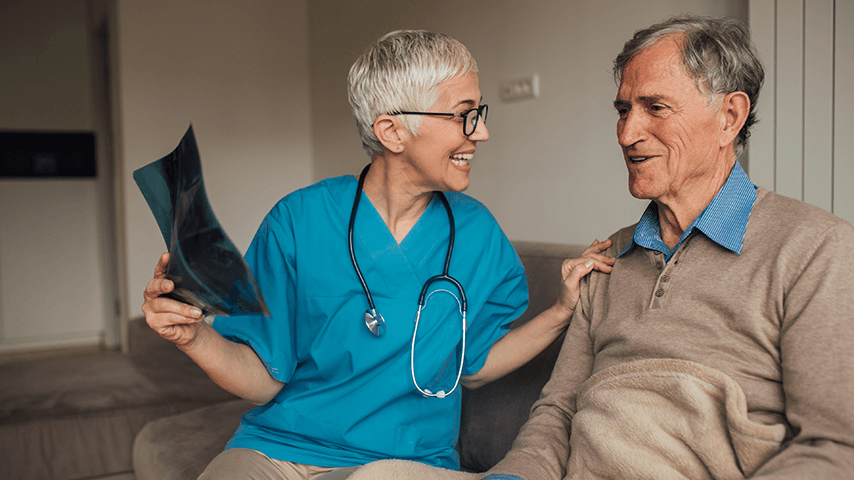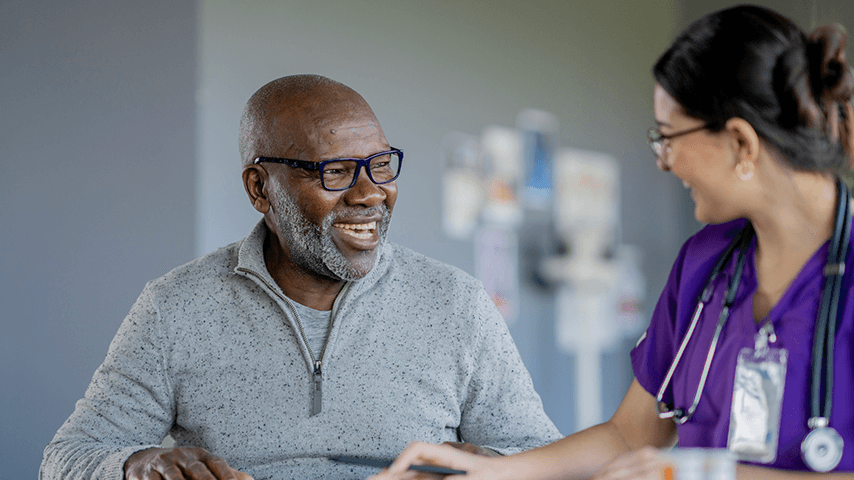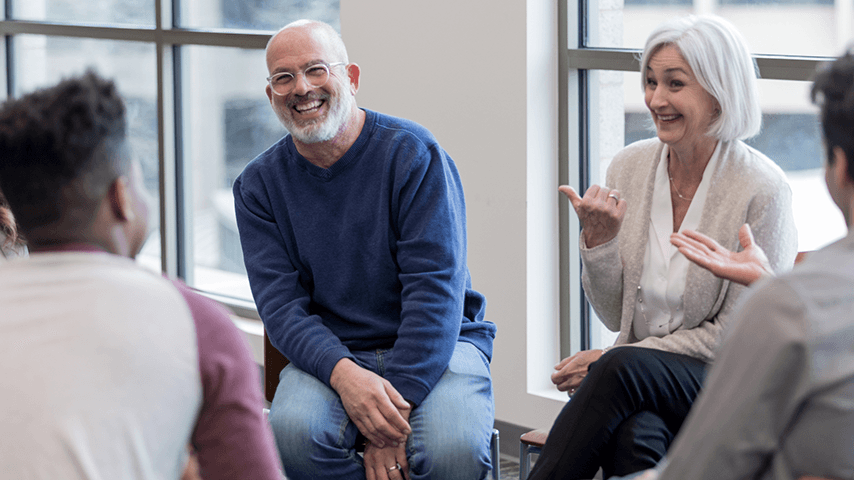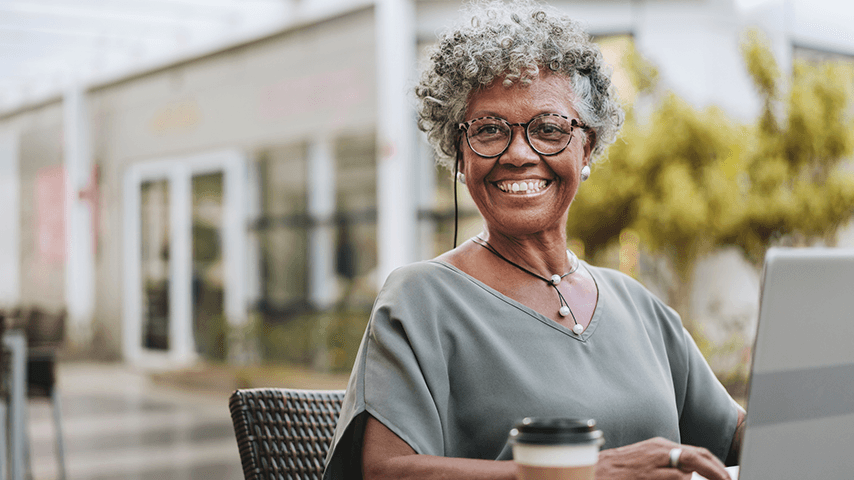Making the Most of Your Health Care Appointments: Tips for Adults with Blindness or Low Vision
5 min read

Related Topics
Health care is important for all of us. And for people living with blindness or low vision, there are some specific strategies that can enhance understanding, improve accessibility, and help ensure you're getting the best care.
How to communicate effectively with health care providers
Ensure your health care providers and their staff are aware of any specific needs. Share this information in advance when booking your appointment, and remind your practitioner and practice staff at the start of your appointment. Many health care providers see hundreds of patients or more, so it’s helpful to remind them that you live with blindness or low vision.
What to do before your health care appointment
- Give a heads up: If you are visiting a new facility, let staff know if you anticipate needing assistance navigating the facility.
- Request information in accessible formats: Let your health care team know if you require medical forms, instructions, and reports provided in accessible formats that are compatible with screen readers or in Braille, large print, or other preferred formats. Providing advance notice can improve your experience on appointment day.
- Plan transportation: Since transportation can become a key barrier, where possible, arrange in advance reliable transportation such as paratransit, ride share, and other services. Because an increasing number of practitioners use multiple office locations, call to reconfirm the appointment address before heading out to your appointment. For larger facilities, confirm the entrance that’s closest to your provider. You can also use apps to familiarize yourself with the route to the facility–especially important when using public transit–and apps that project the time necessary to travel from your home to the appointment location, which can vary significantly based on your departure time.
What to do the day of your health care appointment
- Bring relevant documents and medical information: Make sure to have your ID and insurance cards ready. Consider creating a digital or printed summary of your medical history, current medications, allergies, past surgeries, procedures, treatments, and emergency contacts to streamline the intake process. This is especially important when visiting a provider for the first time. Consider using apps such as MyChart that offer accessible features for online health records. For prescriptions, consider pharmacies that offer large print or Braille labels/prescription information, including CVS SpokenRX (which reads prescription information aloud with an app), and services such as Accessible Pharmacy Services offering accessible labels, packaging, and home delivery.
- Clearly articulate accommodations required during visits, such as accessible seating arrangements or assistance with mobility. You may wish to ask staff to guide you through the facility during your first visit, highlighting waiting areas, restrooms, and exam rooms.
- Let practice staff know if you encounter any difficulties or need additional assistance completing forms and paperwork.
- Use detailed language to describe issues and symptoms to compensate for the nonverbal cues providers might tend to rely on.
- Ask questions. Obtain all necessary information regarding follow-up diagnostics, prescriptions/medications and their safe use, referrals, next steps, and timing of follow-up appointments.
- Take notes. It’s easy to forget details after an appointment. If yours is a complex appointment or medical issue, consider using apps or other accessible tools to take detailed notes during your visit.
Why you should consider bringing a family member, friend, or advocate
Especially for appointments covering complex issues or procedures, consider asking a trusted person to accompany you to provide additional support and to capture important information you might miss.
When you create an emergency plan
Emergencies happen, and it's better to be prepared. Create an emergency plan that’s tailored to your needs. Clearly communicate your vision loss and immediate needs when interacting with first responders.
As part of your emergency plan, designate at least one emergency contact person. After confirming you are doing so with them, add their contact information and set them as an emergency contact in your mobile device via the phone app or a health app. Consider enabling additional emergency settings that vary by type of device, including those that share medical information with emergency services and providers, trigger SOS calls to emergency services and contacts, and share your location. Learn more about helpful emergency features for iPhone and Android.
Maintain an accessible digital list of emergency contacts, medications, medical conditions, and other pertinent information so it’s available at all times. You can use the full version you bring to medical appointments or have an abbreviated version for emergency use.
How to find vision rehabilitation and support
Local vision rehabilitation agencies offer specialized training and support to help with the activities of daily living. Orientation and mobility training can assist with travel and assistive technology can help you access apps, devices and accessible software. Many also offer support groups and more.
Access a list of Vision Rehabilitation Agencies and visit Time to Be Bold to find local vision rehabilitation services and other resources. Call the APH hotline to receive support and practical coping strategies for everyday tasks, join remote discussion groups, and access free online resources at the APH Connect Center and VisionAware.
By effectively advocating for yourself, using technology, and accessing supportive networks, you can successfully navigate the health care system while addressing your unique challenges and needs as a person living with blindness or low vision.
Learn more about vision rehabilitation through other articles in this series:
- Identifying Undiagnosed Vision Loss
- Common Age-Related Eye Diseases: What to Know and What You Can Do
- What Independent Living Skills Help People Living With Vision Loss?
- Helping People with Blindness and Vision Loss Continue to Participate in Everyday Activities
- How Assistive Technology and Adaptive Equipment Help People Living with Vision Loss
- How Orientation and Mobility Training Can Improve Quality of Life For People Living With Vision Loss
- What Is Accessibility and Why Is It Important for People with Vision Loss?
- Safety Tips for Older Adults Living with Vision Loss
- Safe Cooking for People with Blindness or Low Vision



